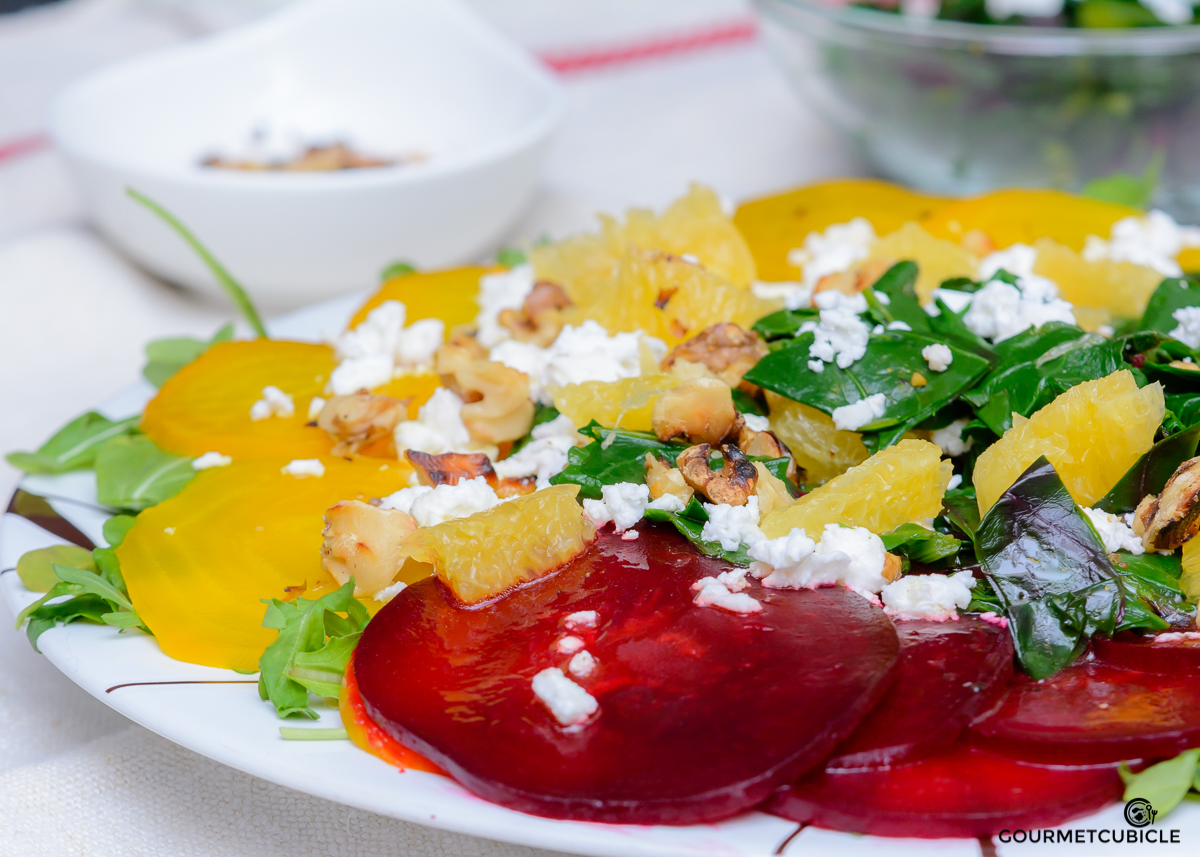Muhammara: Syrian Red Pepper and Walnut Dip
Muhammara is my go-to party food. Every time I host a party, I make sure to prepare muhammara. It’s usually the appetizer (meze in Middle Eastern cuisine) that gets the most attention and praise. One of the main reasons I like making it – other than it’s quick and easy to prepare— is that it fits into most people’s diet. It’s very versatile: vegans, vegetarians, and gluten-free people alike can enjoy it.
If all of the above aren’t enough to convince you, then here is another good one: it’s different than the usual suspects (hummus and babaganoush- I’m talking about you). The smoky sweetness of charred the red peppers, delicately balances the nuttiness of the lightly toasted walnuts, the rich fruitiness of the pomegranate molasses, and the subtle kick of the garlic. All in all, it’s a complex dish.
Muhammara is originally from Syria. Aleppo to be more specific. Most of you have heard of Aleppo, but most likely because of other reasons than this red pepper dip. Syrian food plays an important part in the Middle Eastern cuisine, as it’s heavily influenced by the civilizations that settled in that area: Arab, Persian, and Turkish. As a result, the food is very similar to Levantine cuisine.
As a rule of thumb, muhammara is a dip, rather than a spread. It’s best eaten with fresh warm pita bread, but can be savored with fresh vegetables as well. I’ve even heard of muhammara served with meats and fish, but honestly, I haven’t tried it that way before. Regardless of your diet, or preference you won’t be disappointed in it.
Enjoy!
MUHAMMARA: Syrian RED PEPPER AND WALNUT DIP
Serves 6-8
Prep time: 15 minutes
Cook time: 30 minutes
Total time: 45 minutes
Ingredients
- 2 large red bell peppers (or 3 large roasted peppers)
- 1 cup raw walnuts
- 1 clove garlic
- 2 Tbsp. fresh lemon juice (1 medium-sized lemon freshly squeezed)
- ½ cup pomegranate molasses
- 2 Tbsp. olive oil
- ½ Tbsp. smoked paprika
- ½ tsp. crushed red pepper
- ¾ tsp. ground cumin
- 1 tsp. salt
- ¾ tsp. white peppe
Instructions
- Pre-heat the oven to 400F (200C) degrees.
- Spread walnuts in a single layer on a baking sheet. Roast for 5 minutes. Toss walnuts around for even roasting, and then return to the oven for 3 more minutes. Remove from the oven and let them cool down.
- Fire up the grill. When it reaches 450F (230C), place the peppers on the open grill. Roast for 25 minutes, turning them occasionally until they are charred, soft, and collapsing.
- Remove peppers from the grill, place them in a bowl, and cover them with a plastic wrap. Let them rest for 5 minutes.
- Peel the roasted peppers, and discard the charred skin and the seeds.
- Place the red pepper flash, walnuts, garlic, lemon juice, pomegranate molasses, olive oil, smoked paprika, crushed pepper, and cumin in a food processor, and purée until smooth, scraping the sides of the bowl regularly.
- Taste and adjust the seasoning by adding salt and pepper.
- Refrigerate until ready to serve.
- Spread muhammara into a bowl and make a well in the center with the back of the spoon. Top with a drizzle extra virgin olive oil, and garnish with crushed roasted walnuts and smoked paprika. Serve with warm pita bread.
Notes
- If you don’t have a grill, char the fresh red peppers on all sides directly on the burner of a gas stove until blistered all over. This should take significantly less time than grilling. Another alternative is roasting them in the oven.



























